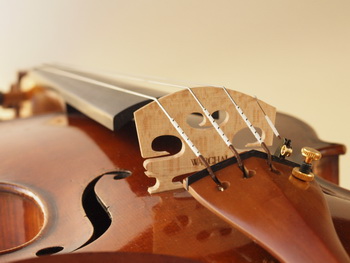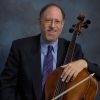
100 Cello Warm-Ups and Exercises Blog 8: Open String Warm-Ups Part 2
Robert Jesselson

Part Two of Open String Warm-Ups will continue with exercises for sautille, bow changes, string crossings, dynamics, etc.
Bouncy Bow Exercise:
This exercise is a great way to work on sautille, building it up from spiccato to the fast, uncontrolled sautille stroke.
Before doing the “Bouncy Bow” exercise, I would recommend doing a regular routine of daily scales with a slow spiccato at m=60, using eighth notes, triplets,16th notes until the spiccato is easy to execute. Then, after exploring this exercise, add sextuplets and octuplets. I find that if intermediate students do this regularly, then the fast sautille stroke is not difficult to learn.
“Bubble” Exercise:
This exercise fosters an easy bounce of the bow, and teaches us that the bow has its own bounce.
Bow Rotation and Wave Exercises: The bow rotation exercises work on tone color changes and finger flexibility using more and less hair. They are also important for helping to keep the bow in the string (when the stick is facing you) and letting it come off the string (when the stick is away from you). The wave exercises are important for string crossings, and for wrist and finger flexibility.
Bow Change Exercises:
One of our most difficult tasks as string players is to execute smooth bow changes. Here are some exercises that address this issue.
Four Basic String Crossing Motions: Now that we have done some exercises with one string, it is useful to work on string crossings between two strings. All string crossings boil down to four basic bowing figures.
We will discuss the details of string crossings in a later blog.
Front and Back of the Hand Exercises:
This exercise helps with relaxation at the frog and getting a better sound at the tip.
Galamian Dynamic Exercises: The Galamian son filé exercises (on page 103 of his book) are particularly useful for working on dynamics. As he writes in his book “Principles of Violin Playing and Teaching”, “The son filé should be practiced on open strings, then on scales singly and in double stops: in every dynamic from piano to forte and with dynamic variations as shown in Example 93″:
Reading and Rhythm Exercise with Open Strings:
It is often useful to read the passage out loud while playing the rhythm – a great coordination exercise as well. (This passage came from Anner Bylsma’s book Bach, The Fencing Master.)
Next week’s Blog (#9) will start a two part series on “Mentalization and Mimes” – warming up the brain for a good practice session, and realizing the importance of “mind over matter” in playing the cello.
Subjects: Practicing, Technique


